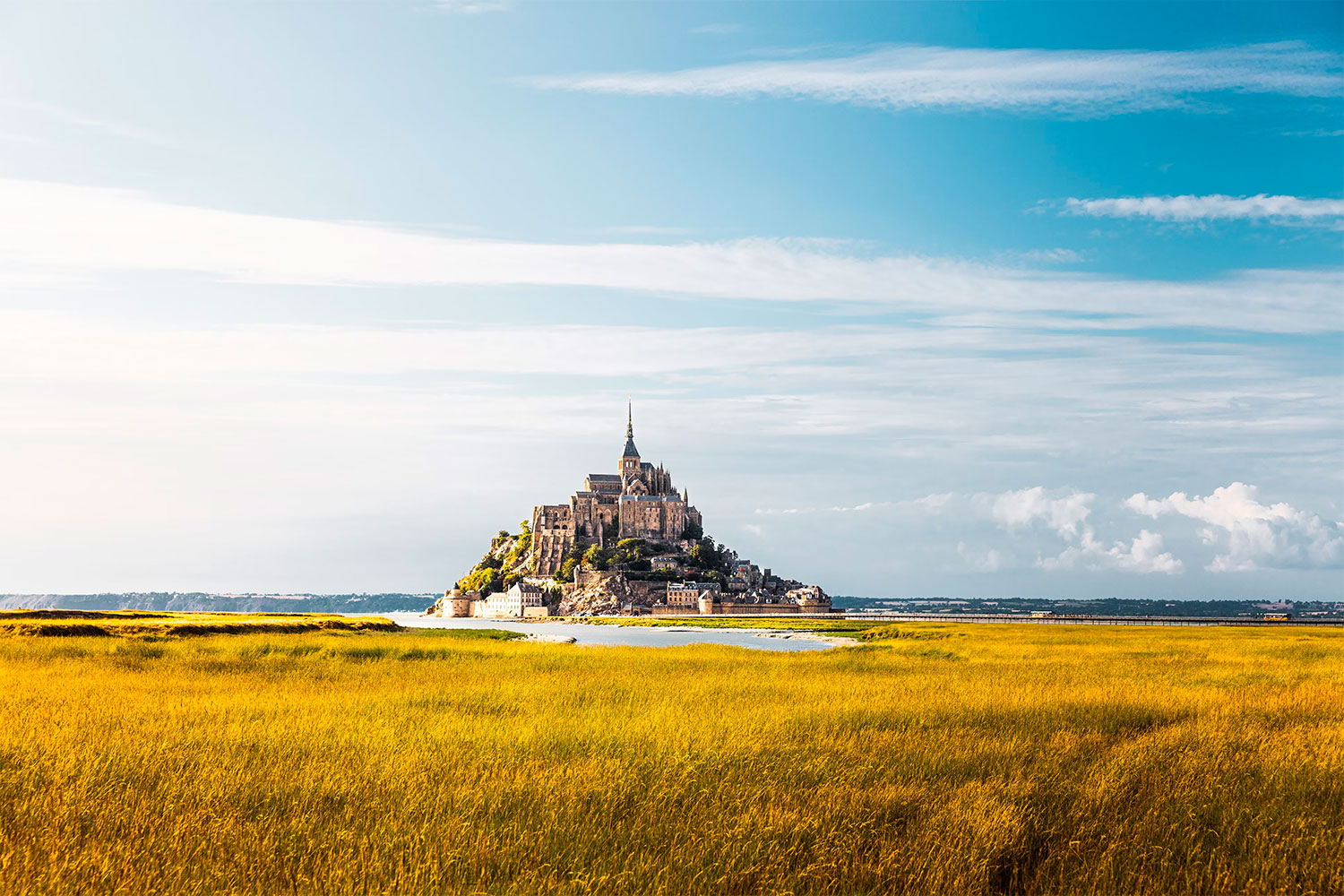Discover 18 top summer activities in Normandy, from Mont-Saint-Michel to cider routes, coastal hikes, gardens, and historic festivals across the region.
Normandy offers one of the most diverse and rewarding summer destinations in France. With its rich blend of historical landmarks, coastal landscapes, local gastronomy, and cultural events, the region appeals to every type of traveler. From the iconic Mont-Saint-Michel to the peaceful countryside of the Pays d’Auge, Normandy invites visitors to explore at their own pace. Summer is ideal to enjoy open-air experiences, including hiking the cliffs of Étretat, attending festivals, cycling through orchards, or tasting local cider and cheese. Whether you’re interested in art, war history, or seaside leisure, Normandy delivers a balanced mix of exploration and relaxation. This guide presents the 18 best things to do in Normandy in summer, with detailed explanations and practical advice for each experience.
1. Mont-Saint-Michel: A Timeless Wonder
Mont-Saint-Michel stands as one of France’s most iconic landmarks, a UNESCO World Heritage site that captivates visitors with its medieval architecture and stunning tidal surroundings. Perched atop a rocky island, the abbey offers panoramic views of the bay, especially mesmerizing during high tide when the mount appears to float on water. Summer’s extended daylight hours provide ample time to explore the winding streets, climb the ramparts, and visit the abbey’s intricate interiors. For a unique experience, consider joining a guided walk across the bay, where you’ll traverse the sands and learn about the area’s rich history and ecology. Remember to check tide schedules and book tours in advance to ensure safety and availability.
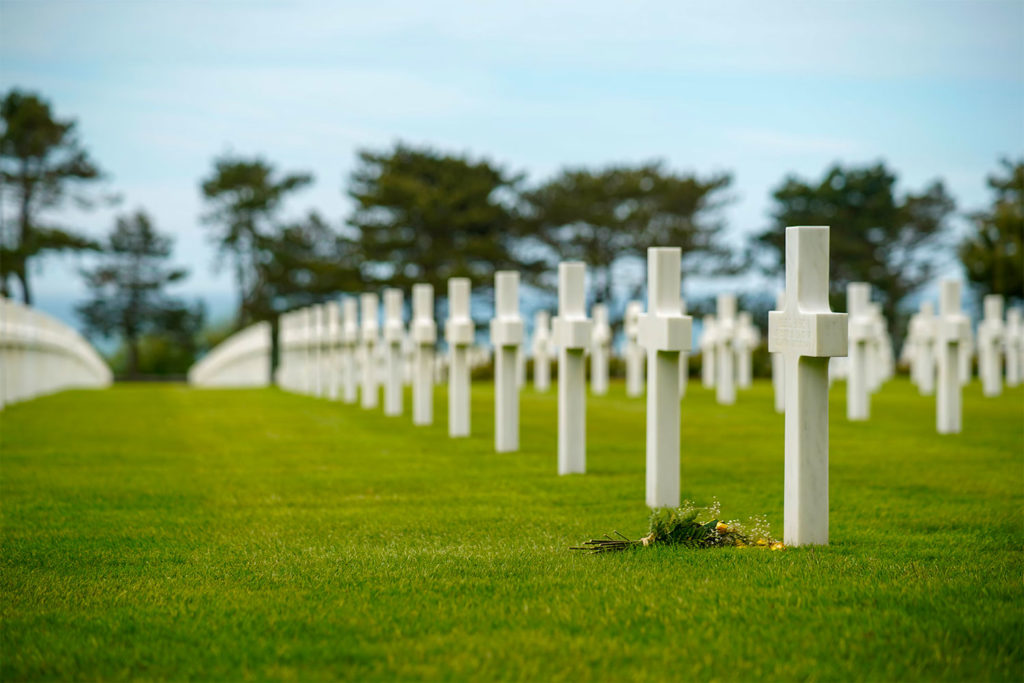

2. D-Day Beaches: Walking Through History
Normandy’s D-Day beaches—Utah, Omaha, Gold, Juno, and Sword—are solemn reminders of World War II’s pivotal moments. Visiting these sites offers a profound connection to the past, with museums, memorials, and preserved bunkers providing context to the events of June 6, 1944. Guided tours enhance the experience, offering detailed narratives and personal stories of bravery and sacrifice. Highlights include the Normandy American Cemetery, the British Normandy Memorial, and the Juno Beach Centre, each honoring the soldiers who fought for freedom. Summer’s pleasant weather makes it an ideal time to explore these historic sites, reflecting on the courage and resilience displayed during the war.
3. Giverny: Monet’s Garden in Full Bloom
The village of Giverny, home to Impressionist painter Claude Monet, is a haven for art and nature enthusiasts. Monet’s meticulously designed gardens burst into vibrant colors during summer, showcasing the water lilies, Japanese bridge, and floral arrangements that inspired many of his masterpieces. Visitors can tour Monet’s house, preserved to reflect his life and work, and explore the Museum of Impressionism nearby. To avoid crowds, plan your visit early in the morning or late afternoon, and consider booking tickets in advance. Giverny’s serene atmosphere offers a peaceful retreat, allowing you to immerse yourself in the beauty that fueled Monet’s creativity.
4. Honfleur: A Picturesque Port Town
Honfleur’s charming harbor, lined with colorful buildings and bustling cafes, has long attracted artists and travelers alike. Strolling through its cobblestone streets, you’ll discover art galleries, boutique shops, and seafood restaurants offering fresh catches from the nearby sea. The town’s rich maritime history is evident in its architecture and museums, such as the Eugène Boudin Museum, which showcases works by local artists. Summer brings a lively ambiance to Honfleur, with street performances and festivals adding to its allure. Whether you’re savoring moules marinières by the water or exploring the historic Sainte-Catherine Church, Honfleur offers a delightful blend of culture and relaxation.
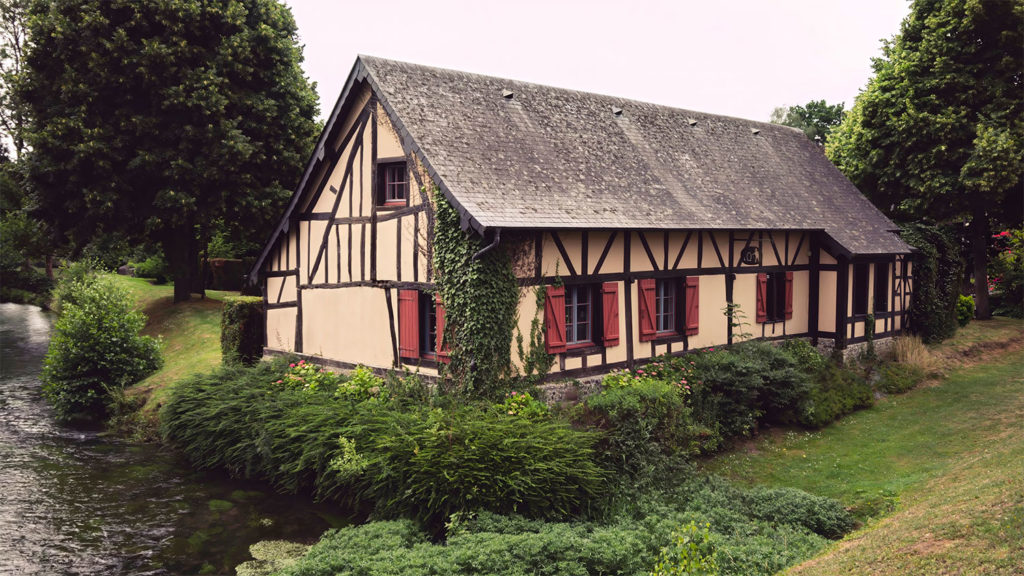
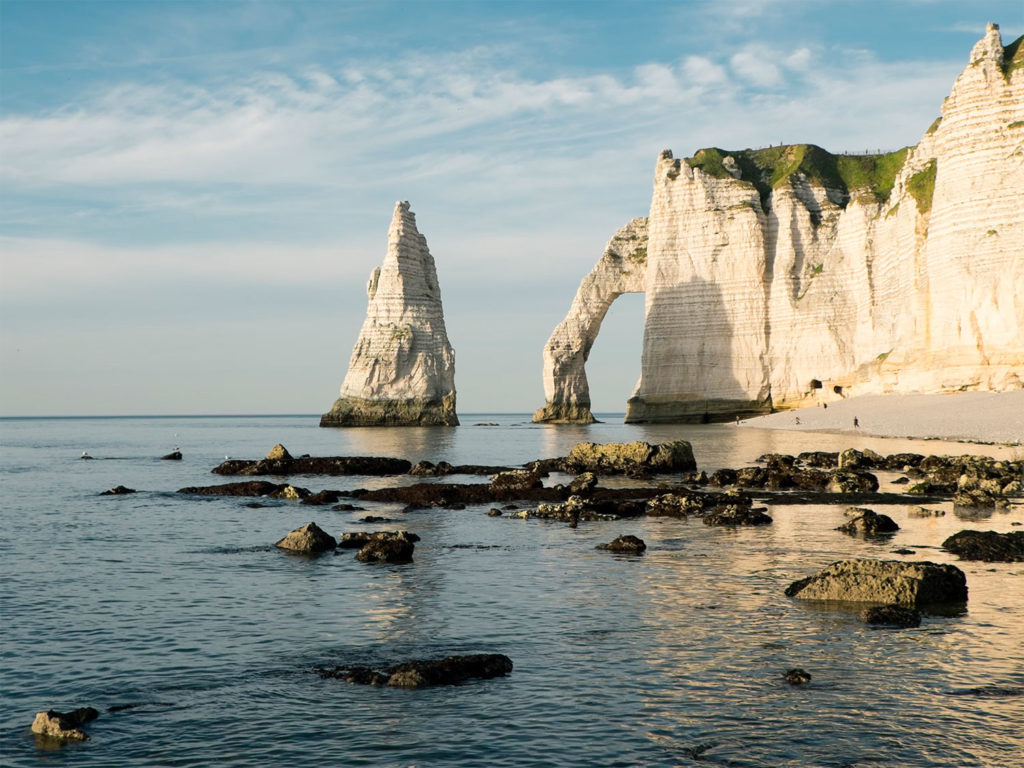
5. Étretat Cliffs: Nature’s Sculptures
The white chalk cliffs of Étretat, sculpted by wind and sea, present a dramatic coastline that has inspired countless artists and writers. Hiking along the GR21 trail provides breathtaking views of natural arches and sea stacks, such as the famous “Needle” rock formation. The town itself offers quaint cafes and the Jardins d’Étretat, a contemporary garden blending art and nature. Summer’s clear skies and mild temperatures make it an ideal time for outdoor exploration, photography, or simply enjoying a picnic with panoramic ocean vistas. Don’t forget to wear comfortable shoes and bring water for your hike along the cliffs.
6. Deauville: The Parisian Riviera
Deauville, often referred to as the “Parisian Riviera,” exudes elegance with its sandy beaches, colorful parasols, and iconic boardwalk, Les Planches. The town hosts the Deauville American Film Festival each summer, attracting celebrities and film enthusiasts from around the world. Beyond the beach, visitors can explore luxury boutiques, the historic Casino Barrière, and the renowned Hippodrome for horse racing events. Deauville’s blend of glamour and seaside charm offers a perfect summer escape, whether you’re sunbathing, indulging in gourmet cuisine, or attending cultural events. Accessible by train from Paris, it’s a convenient and luxurious getaway.
7. Bayeux and Its Tapestry: A Medieval Marvel
The town of Bayeux is renowned for its 11th-century tapestry, a 70-meter-long embroidery depicting the Norman conquest of England. Housed in the Bayeux Museum, this UNESCO-listed artifact offers a glimpse into medieval history and artistry. Summer visitors can also enjoy the “Tree of Liberty” sound and light show, illuminating the town’s cathedral with vibrant projections. Bayeux’s well-preserved medieval architecture, charming streets, and proximity to D-Day sites make it a compelling destination for history buffs and casual travelers alike. Consider staying overnight to fully appreciate the town’s ambiance and attractions.
8. Normandy’s Countryside: Tranquil Retreats
Beyond its coastal towns, Normandy’s countryside offers lush landscapes, rolling hills, and picturesque villages like Lyons-la-Forêt. Summer is perfect for leisurely drives, cycling, or picnicking amidst apple orchards and half-timbered houses. The region’s rural charm provides a peaceful contrast to bustling tourist spots, allowing visitors to unwind and connect with nature. Local markets and farm visits offer opportunities to sample regional products, from cheeses to ciders. Whether you’re exploring on foot or by car, Normandy’s countryside invites you to slow down and savor its serene beauty.
9. Summer Festivals: Celebrating Culture and Music
Normandy’s summer calendar is filled with festivals celebrating music, art, and local traditions. The Pete the Monkey Festival in Saint-Aubin-sur-Mer combines eclectic music performances with a commitment to environmental causes, creating a family-friendly atmosphere near the beach. Other notable events include the Beauregard Festival in Hérouville-Saint-Clair, featuring international rock and pop acts, and the Rouen Cathedral light show, where the Gothic façade becomes a canvas for stunning projections. These festivals offer immersive cultural experiences, bringing communities together in celebration and creativity. Be sure to check event schedules and book tickets in advance, as these popular gatherings often sell out.
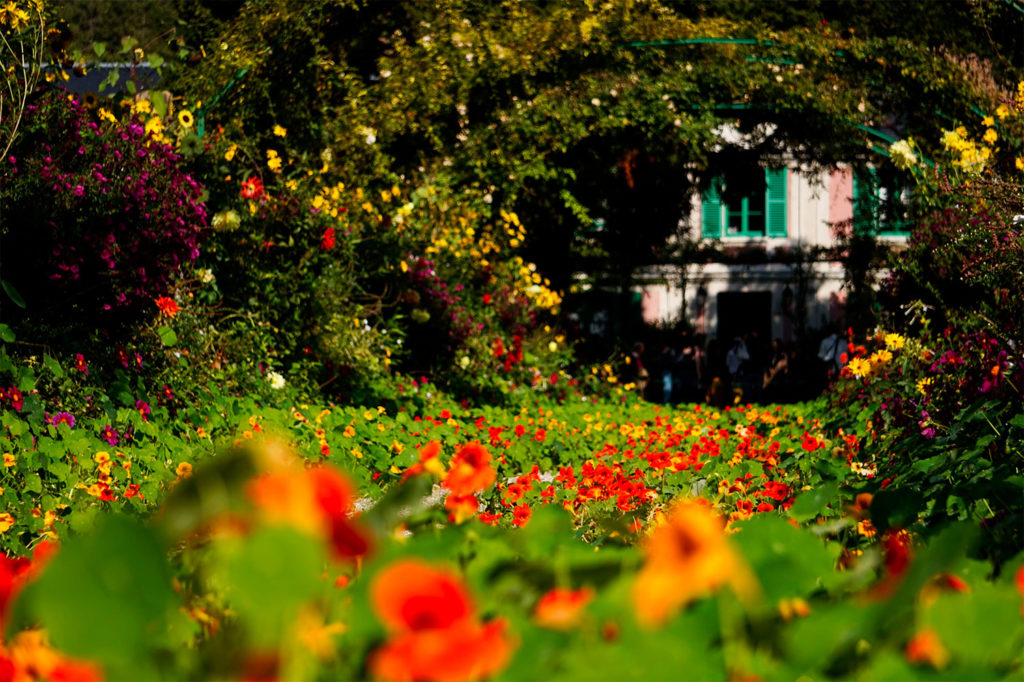
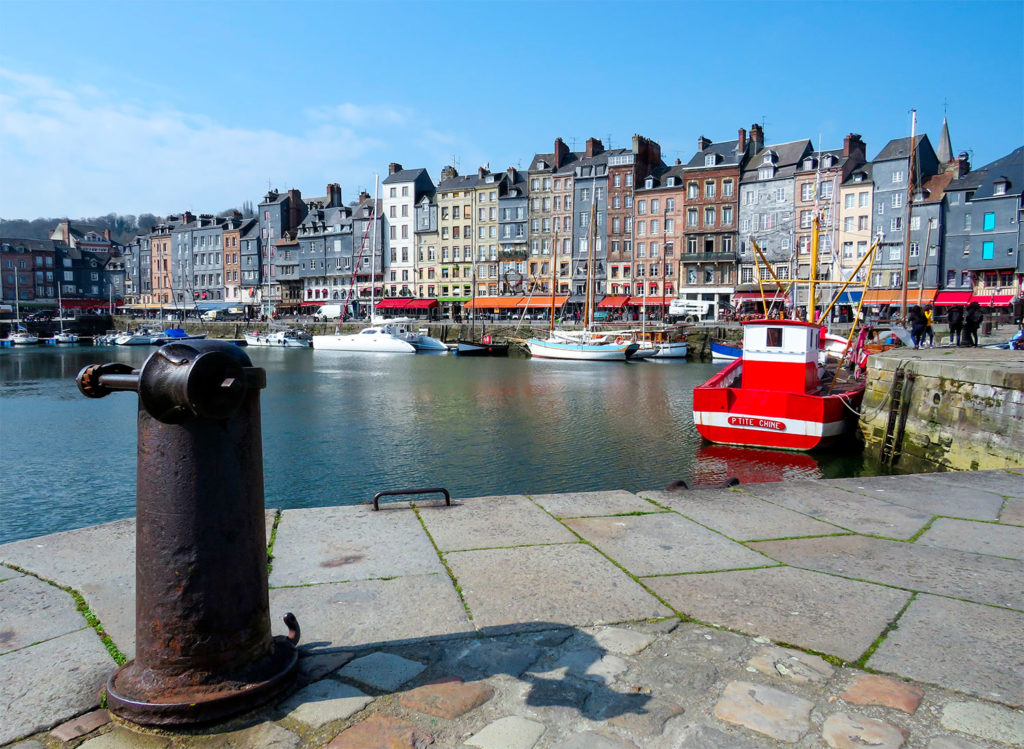
10. Château Stays: Live Like Royalty
Experiencing a night in a Normandy château offers a unique blend of luxury and history. Many restored castles now operate as hotels or bed-and-breakfasts, providing guests with elegant accommodations amidst antique furnishings and manicured gardens. Staying in a château allows you to immerse yourself in the region’s aristocratic heritage, often accompanied by gourmet dining and personalized service. Locations vary from countryside retreats to estates near historic towns, catering to different preferences and budgets. Booking a château stay adds a touch of grandeur to your Normandy adventure, creating memories that last a lifetime.
11. Rouen Cathedral light show
Each summer evening, the Gothic façade of Rouen Cathedral is transformed into a dazzling canvas during the “Cathédrale de Lumière” sound and light show. This free open-air projection begins around 10:30 pm in June and gets earlier as the summer progresses. The spectacle tells stories through light, often featuring Viking legends, Joan of Arc, or Claude Monet’s art. The event uses cutting-edge video mapping technology to create immersive animations that appear to bring the cathedral to life. The show is family-friendly and lasts about 25 minutes. It’s easy to access from Rouen’s city center, and many visitors pair the evening experience with dinner at nearby brasseries. In summer, crowds gather early, so it’s wise to arrive 15–30 minutes before the start to get a good viewing spot. This event showcases Normandy’s commitment to blending history, technology, and public art in a way that’s accessible and inspiring. It’s also a way to enjoy Rouen’s historic core by night in a safe, festive atmosphere.
12. Pete the Monkey Festival
Held every July in Saint-Aubin-sur-Mer, the Pete the Monkey Festival is a boutique music event that combines culture, environmental awareness, and seaside fun. Originally created to raise funds for a Bolivian monkey sanctuary, the festival has grown into one of Normandy’s most unique summer gatherings. Over three days, it offers eclectic music—from indie pop to electronic and world music—performed on intimate, themed stages. Unlike large festivals, Pete the Monkey keeps a human scale, creating a friendly, community-driven vibe. Families are welcome, with activities for children like workshops, storytelling, and nature walks. The coastal location provides quick beach access, and many festivalgoers take morning swims before heading to the concerts. On-site camping is available, but spots sell out early. The festival also emphasizes sustainability: reusable cups, local food, and zero-waste initiatives are all part of the experience. For travelers seeking a non-commercial, creative, and relaxed summer festival, Pete the Monkey stands out as a local favorite that blends arts and ethics in an idyllic setting.
13. The Normandy Cider Route
The Route du Cidre is a 40-km circular trail through the Pays d’Auge, showcasing Normandy’s long tradition of apple cultivation and cider production. This scenic drive includes stops in villages like Cambremer, Beuvron-en-Auge, and Bonnebosq. Along the route, you can visit family-run cider farms, distilleries, and producers offering tastings of cider, Calvados brandy, and Pommeau (a blend of apple juice and Calvados). Summer is harvest season for early varieties and a good time to see the orchards in bloom or in fruit. Many producers offer guided tours explaining fermentation techniques, barrel aging, and regional differences. Some stops even provide food pairings with local cheeses like Camembert or Livarot. Driving the route takes half a day, but can be extended to a full day with a relaxed picnic or local lunch. If you don’t want to drive, bike tours or private guided options are available. The route provides a calm and authentic rural experience in Normandy, ideal for lovers of gastronomy and tradition.
14. Jardins d’Étretat
Perched above the famous white cliffs, the Jardins d’Étretat offer a unique fusion of landscape art, sculpture, and panoramic views of the Alabaster Coast. Open from April to November, the gardens are especially lush in summer, with carefully sculpted boxwood hedges, contemporary artworks, and rare plants arranged in themed sections. Designed by landscape architect Alexandre Grivko, the gardens reinterpret the spirit of Impressionism through topiary and spatial design. Visitors walk through “rooms” representing natural elements like wind and sound, with sculptures integrated into the environment. Entry costs around €12 per adult, and tickets can be booked online. Located a short walk from Étretat’s town center and main beach, the gardens are often quieter than the cliffs below, offering a peaceful alternative with dramatic sea views. Ideal for photographers and art lovers, the Jardins d’Étretat merge cultural innovation with environmental beauty, giving you another reason to linger in one of Normandy’s most iconic coastal towns.
15. Grande Cascade de Mortain
The Grande Cascade de Mortain, the highest waterfall in western France, offers a refreshing natural escape in southern Normandy. Located near the village of Mortain-Bocage in the Manche department, the waterfall drops 20 meters through a mossy, shaded gorge—perfect for a hot summer day. A short walking trail leads to the falls from a nearby parking area, making it accessible for families and casual hikers. The surrounding trails also offer longer hikes, including circuits through the Petite Cascade and old monastic ruins. Interpretive signs explain local flora, fauna, and legends, such as stories of monks and miraculous healing waters. There’s no entry fee, and the area is managed as a protected natural site. You can bring a picnic or enjoy a meal in the nearby village. Few tourists know about this inland gem, making it a peaceful contrast to the busier coastal sites. The sound of cascading water and the cool forest air provide a serene experience that captures a different side of Normandy.
16. Museum of Impressionisms in Giverny
Adjacent to Monet’s home in Giverny, the Museum of Impressionisms adds context and depth to the artistic experience. Open from April to early November, it hosts rotating exhibitions of Impressionist and Post-Impressionist works, often focusing on lesser-known artists or themes. The museum’s airy galleries and surrounding gardens create a peaceful environment that complements the nearby house and water lily pond. Unlike the Monet house, which is more of a preserved historic site, the museum is a modern institution with curatorial focus, wall texts in English and French, and a design that invites contemplation. In summer, temporary exhibitions often draw from prestigious French and international collections. The museum also offers lectures, outdoor concerts, and educational activities. Entry costs around €9–€10, and combination tickets with Monet’s house are available. A short walk from the main parking area and restaurants, the museum makes a logical addition to any visit to Giverny. It’s ideal for travelers who want to understand Impressionism in a broader historical and global context.
17. Cycling in Pays d’Auge
The Pays d’Auge offers gentle hills, orchards, half-timbered farms, and quiet country roads—perfect conditions for cycling tours. In summer, the warm but temperate weather (average 20–25°C) makes it comfortable for riders of all levels. Several marked circuits start from towns like Cambremer or Lisieux, ranging from 15 to 50 kilometers. You can rent bikes locally or join a guided tour, some of which combine cycling with Calvados tastings or local cheese farm visits. Electric bikes are also available for those wanting assistance on hills. You’ll pass through flower-decked villages, medieval churches, and small rivers bordered by willow trees. Along the way, small roadside stands offer cider or fresh produce. These quiet routes avoid heavy traffic and offer opportunities to stop and relax in natural shade or on village café terraces. Maps are available at tourist offices, and many trails are looped circuits. For travelers looking to slow down and see a more intimate, authentic Normandy, cycling through the countryside offers just that.
18. Local markets and food halls
Summer in Normandy is market season, and open-air markets become vibrant gathering places where locals and visitors meet around regional specialties. From Caen’s Sunday market along the marina to Bayeux’s Saturday morning stalls or Dieppe’s vast food market on Saturdays, each offers something different. You’ll find local cheeses (Camembert, Livarot, Pont-l’Évêque), cider, charcuterie, seafood, strawberries, and fresh-baked bread. Many vendors offer samples, and food trucks or oyster stands allow you to eat on the spot. In Rouen, the covered Halles du Vieux-Marché offers gourmet products and a more permanent indoor market experience. Summer markets often feature outdoor performances, floral displays, and craft vendors. Bring cash, as some vendors may not take cards, and arrive early (between 8am–10am) for the best selection. These markets are not only about food—they’re an immersion into daily Norman life, reflecting its agricultural richness and community spirit. Visiting a local market provides a practical and delicious way to engage with Normandy’s terroir while supporting small producers.
XperienceFrance is your travel specialist in France.
